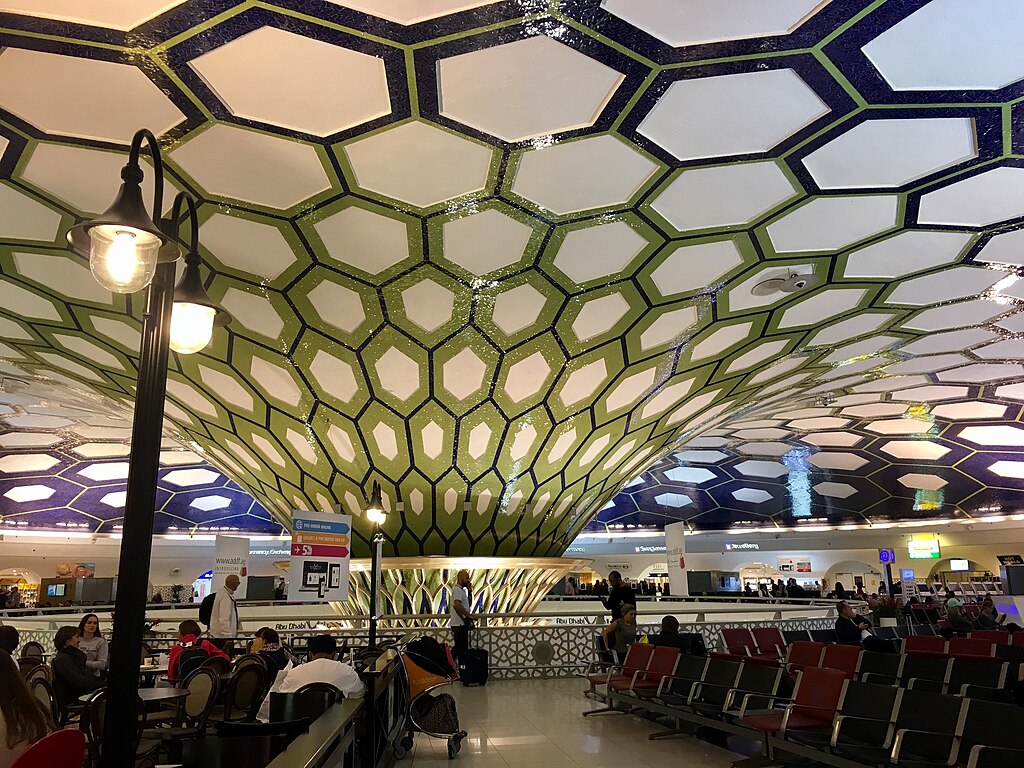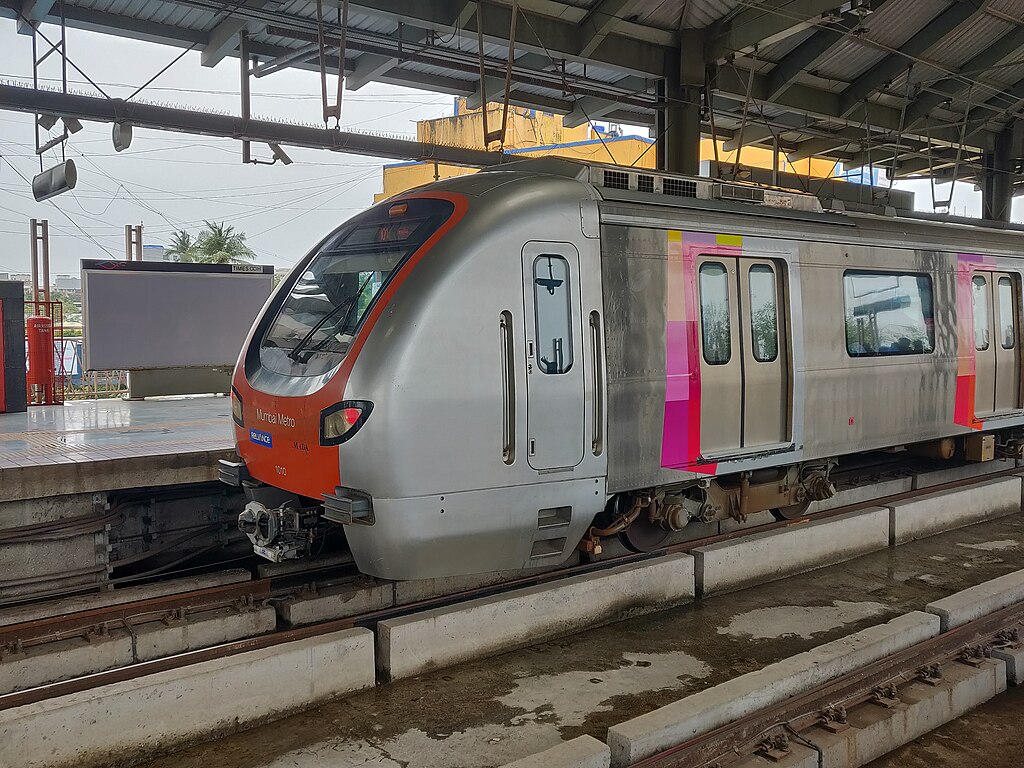India- the nation with some iconic airports like Delhi Airport (DEL) [which is one of the busiest in the world], and the Chhatrapati Shivaji Maharaj International Airport (BOM) has scheduled to open a new airport’s first phase in 2025 – the Navi Mumbai International Airport (NMIA). People hope that it will become a crucial hub, alongside being a great addition to, the country’s (and more importantly, Mumbai’s) air travel.
Mumbai is already the second busiest airport in India. As a result, one would think that the development of NMIA is the city’s pressing need for expansion. However, in the neighboring nation of Nepal, Pokhara International Airport(PHH), which was supposed to be an aide to Tribhuvan International Airport (TIA) [which is the busiest in the nation], turned out to be a financial disaster.
While an example from the neighboring country might serve as a cautionary tale, India is much more politically stable than Nepal has ever been. PHH is touted to be China’s debt trap and is expected to follow the sad, sorry tale of the emptiest airport in the world. Nepal, a nation almost 30 times smaller in area than India, has 50 airports. India, on the other hand, is a nation whose airlines have placed the largest airline order in history, has merely 148. And these airports in India are nowhere as defunct as the airports in Nepal. showing the superiority of India’s aviation.
NMIA is on its track to becoming the largest airport in Mumbai. And here’s how.
Overview of Navi Mumbai International Airport: A New Era in Indian Aviation

Photo: Prime Minister’s Office | Wikimedia Commons
Here are a few facts and figures related to NMIA:
- It is spread over 1,160 hectares,
- It is set to be the second-largest airport in India
- The cost of construction is approximately $1.9 billion
- From 2032, it will be able to handle 95 million passengers annually
Navi Mumbai Airport is capacious enough to handle twice the number of passengers that BOM can. After the construction of the first phase, the airport will have two runways and two new terminals. A metro is expected to connect the new airport in Mumbai to the older one. But one question beckons: “If the Bollywood city already has such a large airport just 30 km away, could it not have been expanded and the construction of the new one just done away with?
We’ve got to stretch back to 1928, when Mumbai’s aerodrome was not built as a proper airport but as an airfield.
Historical Context: The Evolution of Mumbai’s Airports
Juhu Aerodrome: The First Civil Aviation Airport in India
Limited commercial flights operated at the Juhu Aerodrome – the country’s first civil aviation airport. The Bombay Flying Club primarily used this aerodrome that was located in the western suburbs of Bomba. While people did get their flying lessons here, operations were limited as the airport (and the city itself) was home to monsoon rains.
J.R.D. Tata, who is known as the Father of Civil Aviation in India, inaugurated India’s first scheduled commercial mail service from Juhu Airport. After this first flight that was piloted by someone who was known as “Jeh” (for his initials) on October 15, 1932, services from Juhu stretched to cities such as Karachi, Ahmedabad, Pune, Bellary, and Madras.

Photo: Powerhouse Museum | Wikimedia Commons
Aircraft such as Puss Moth and Leopard Moth, housed in a simple hut, operated to and from Juhu. Here are a few pieces of the history of this airport until the early 1950s:
- An East-West and a North-South runway was built in Juhu in 1936 but waterlogging persisted
- World War II thwarted the plans of the third runway and British Royal Air Force stationed its planes in Juhu
- Juhu’s bitumen runway was replaced with concrete in 1937.
- Air Services of India Limited and Tata Sons Limited started to base their operations at Juhu in 1938.
An increase in air traffic led to the development of RAF Santa Cruz, which was to become theChhatrapati Shivaji Maharaj International Airport. In 1948, all commercial operations shifted from Juhu to Santa Cruz, which lay a mere kilometer km east of Juhu.
RAF Santa Cruz
The airfield RAF Santa Cruz was located in Bombay city and initially had three runways and covered 1,500 acres. While the Royal Air Force handed over Santa Cruz for civil operations in India, it was only after India’s independence from the British rule in 1947 that RAF Santa cruise cruised along with its expansion and operations:
- By 1949, four domestic and international airlines operated from Santa Cruz every day.
- The construction of a new terminal and apron started in 1950 and was completed by 1958.
- By 1980, Santa Cruz saw five million annual passengers- the highest for any airport in India at that time.

Interior of Chhatrapati Shivaji International Airport (International terminal) in Mumbai, India
Photo: A.Savin | Wikimedia Commons
It was during this time that jumbo jets such as the Queen of the Skies soared the skies, and these necessitated larger airports. And then began the construction of the terminal T2A, which cost $517,000,000 (adjusted to inflation). The terminal had the distinction of being the first terminal in the subcontinent to feature aerobridges. More expansion ensued, and before the turn of the century, the airport was renamed Chhatrapati Shivaji International Airport. The airport code BOM is a vestige of the anglicization of the city Mumbai as Bombay.
Modernization and Privatization

Photo:Anonymous8010|Wikimedia Commons
By 2003, Mumbai and Delhi airports together handled almost a third of the flight movements in the nation. They also generated a third of the revenue of Airports Authority of India.
With regard to the connectivity to and from Mumbai Airport (to Navi Mumbai Airport), the following data might be pertinent:
- Three metro stations will operate 24/7
- A check-in facility will be available at all Line 3 stations, and an extension of the Red Line (Line 7A) is also planned.
- A new line, Line 8, from CSMI station is expected to run to the under-construction Navi Mumbai International Airport.
The existing airport in Mumbai handled 43 million passengers in 2022. In 2023-2024, almost 800 aircraft movements were observed from BOM with a total of 2.9 million aircraft movements. The airport also handled 0.7 million tonnes of cargo in a year.
The Need for Expansion: Mumbai’s Growing Aviation Market

Photo: Thomas Woodtli | Wikimedia Commons
Given the fact that the Delhi-Mumbai route is the busiest air route in the nation (15% of the airport’s total traffic travels BOM-DEL) and that more Indians are projected to be able to access air travel (India’s aviation market has been growing at a rate of 7% per year), there is a need for expansion to meet the domestic demand. Historic aircraft orders from Air India and IndiGo solidify this claim. Further, Mumbai Airport’s two runways intersect and allow only one to be operational at a time, making it the busiest single-runway airport in the world.
Juhu Airport and the existing airport in Mumbai can’t expand further as they are shrouded by Mumbai’s dense urban landscape. This is in stark contrast to airports in other major cities in India such as Bangalore, Kolkata, Chennai, and Hyderabad.
Navi Mumbai International Airport: Project Timeline and Development

Photo: Umbra Lab, Inc. | Wikimedia Commons
The Navi Mumbai International Airport (NMIA) project was initially proposed in November 1997. A committee set up by the Ministry of Civil Aviation recommended the Mandwa Rivers region as a suitable location for the construction of NMIA. While the idea of a single-runway airport was proposed, the City and Industrial Development Corporation of Maharashtra (CIDCO) proposed two parallel runways.
Ultimately Ulwe region of Navi Mumbai was chosen as the site of the airport’s construction as the low population density of the region merited minimal rehabilitation efforts. What also aided was the fact that more than 50% of the required land was already available with CIDCO. The project received final approval from the Union Cabinet in July 2007, with the Government of Maharashtra approving it in 2008.
Environmental Considerations in Airport Construction
One of the biggest challenges surrounding the Navi Mumbai Airport’s construction was regarding the removal of mangroves, which lay in the low-lying coastal land. Ulwe Hill had to be widened and power transmission lines had to be relocated. Some of the other environmental challenges included.
- The relocation of more than 2,700 households, primarily consisting of fishermen, farmers, and daily wage laborers.
- There were 1,000 acres of mudflats, and the Kalundiya and Ulwe rivers flew through the proposed area.
- The proximity to the Thane Creek Wetlands and Panj Wetlands raised concerns about whether the airport would infringe upon the habitat of birds.
It was reported that workers diverted the Ulwe River outside the airport boundary by cutting through Ulwe Hill – the same hill from where rocks and soil were extracted to elevate the entire airport site by 5.5 meters. Although this helped reduce help reduce the chances of flood at the airport, nearby villages and Panvel experienced an increase in floods.
Connectivity Plans: How NMIA Will Integrate with Mumbai’s Transport Network?

Photo: Aswin Krishna Poyil | Wikimedia Commons
This airport whose construction costs were around $2 billion USD will have a terminal area of 177,000 square meters (besides two parallel runways measuring 3.7 km in length and 60 meters in width) will be linked to the 348A road. Its connection with Mumbai Trans Harbor Link will allow travelers from South Mumbai to reach the airport quickly.
The first phase is expected to open in 2025. Arun Bansal, chief executive officer of AAHL, a subsidiary of Adani Enterprises, the flagship company of the Adani Gruop, said,
“After the inauguration on April 17, we need roughly about four weeks for security sweep and other requirements of the airport procedures, which is why we are looking at the second half of May 2025 for domestic operations.”
Although it is expected that this airport will handle 25.5 million passengers annually, how many operations will take place here is something to watch out for.

